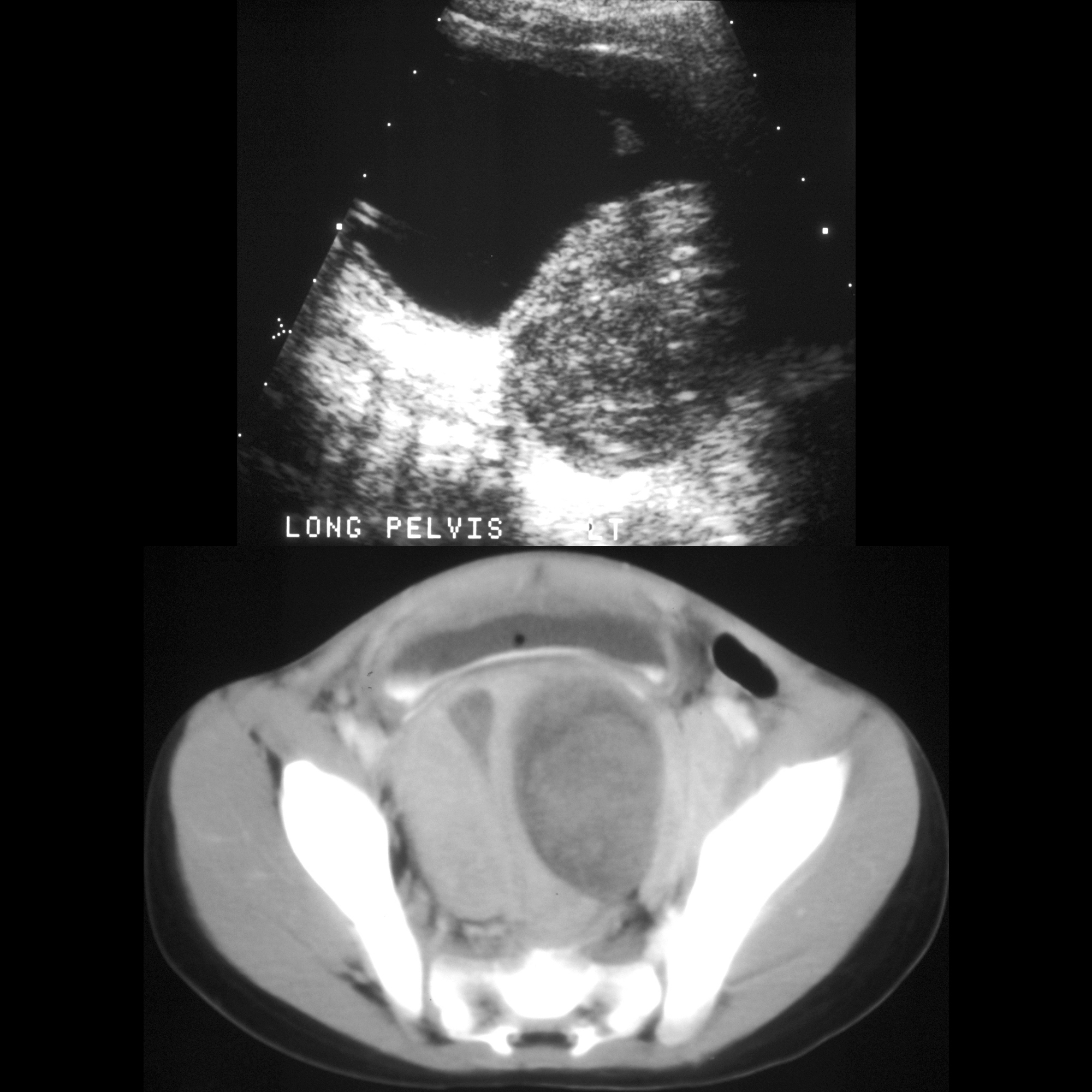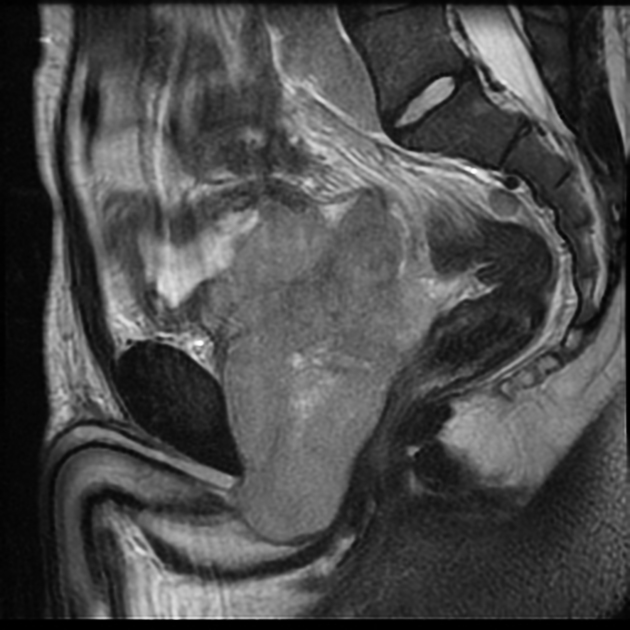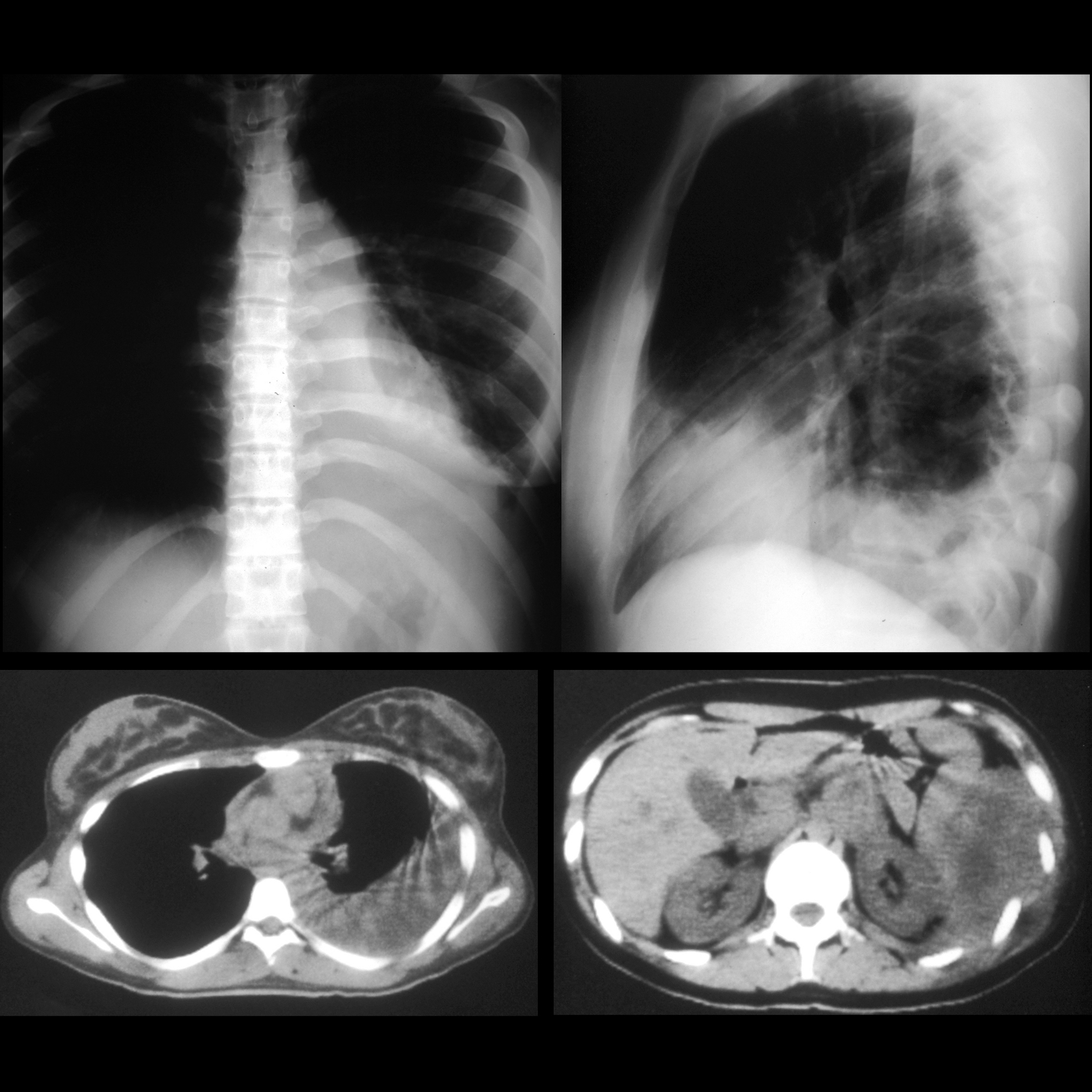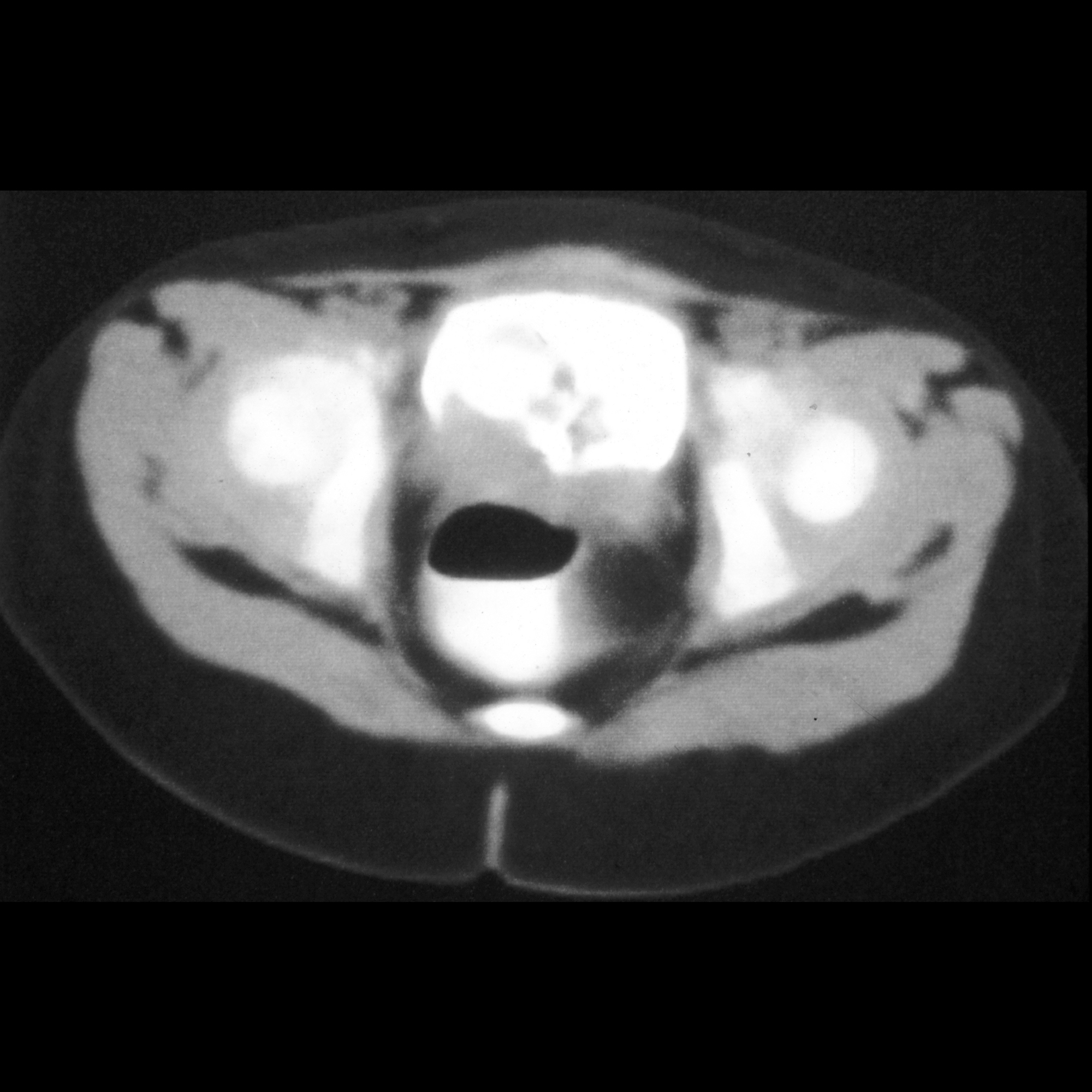Rhabdomyosarkom der Prostata


Rhabdomyosarkom der Prostata
Rhabdomyosarkom des Urogenitaltraktes Radiopaedia • CC-by-nc-sa 3.0 • de
Rhabdomyosarcomas of the genitourinary tract are uncommon tumors occurring in pelvic organs. It is a disease nearly exclusive to the pediatric population.
For a general discussion of this type of tumor, please refer to the article on rhabdomyosarcomas.
Epidemiology
The peak incidence of tumors is between 3-6 years of age, with a slight male predominance of 2-3:1 .
Prostatic origin is the most common in males. The bladder is the most frequent site which affects both sexes.
The vagina, cervix and uterus may all be involved in females. The vagina is the most prevalent in the female genital tract .
Paratesticular tumors are the only genitourinary tract rhabdomyosarcomas that tend to occur in older children, typically adolescents.
Clinical presentation
A pelvic or scrotal mass is the most common complaint, with or without pain. The mass is typically large at presentation. Urinary symptoms may be a feature, such as hematuria and dysuria .
The symptoms depend, to an extent, on which organ is the site for the tumor.
Pathology
As with rhabdomyosarcomas at other sites, there are 4 major subtypes; embryonal, botryoid variant of embryonal type, alveolar and undifferentiated.
The embryonal cell type is most common, accounting for more than half of all histological subtypes.
The botryoid variant is the most frequent to affect the bladder.
Radiographic features
Ultrasonography
Usually the first imaging investigation given its ubiquitous use in the pediatric population. A heterogeneous mass, with variable solid and cystic elements, is often encountered. Doppler interrogation may demonstrate internal vascular flow.
CT
A heterogeneous mass as with ultrasound. Its relationship to other pelvic organs is delineated, in particular, to review for local invasion.
Used to assess for locoregional lymphadenopathy and distant metastatic disease in the lungs, liver and bones.
MRI
In the pelvis may add further to CT in delineated the tumor's relationship to adjacent organs and identifying lymph node disease.
Treatment
Primary surgery with both chemotherapy and radiotherapy play a role in management.
kindliche Tumoren der Prostata
Tumoren der Prostata Radiopaedia • CC-by-nc-sa 3.0 • de
The World Health Organization (WHO) classification of prostate tumors is a commonly used classification system for prostate tumors. The current version was published in 2016 as part of the WHO Classification of Tumors of the Urinary System and Male Genital Organs and replaces the previous classification from 2004:
Classification
Epithelial tumors
Glandular neoplasms
- acinar adenocarcinoma
- atrophic
- pseudohyperplastic
- microcystic
- foamy gland
- mucinous
- signet ring-like cell
- pleomorphic giant cell
- sarcomatoid
- prostatic intraepithelial neoplasia – high grade
- intraductal carcinoma
- ductal adenocarcinoma
- cribriform
- papillary
- solid
- urothelial carcinoma
Squamous neoplasms
- adenosquamous carcinoma
- squamous cell carcinoma
- basal cell carcinoma
Neuroendocrine tumors
- adenocarcinoma with neuroendocrine differentiation
- well-differentiated neuroendocrine tumor
- small cell neuroendocrine carcinoma
- large cell neuroendocrine carcinoma
Mesenchymal tumors
- stromal tumor of uncertain malignant potential
- stromal sarcoma
- leiomyosarcoma
- rhabdomyosarcoma
- leiomyoma
- angiosarcoma
- synovial sarcoma
- inflammatory myofibroblastic tumor
- osteosarcoma
- undifferentiated pleomorphic sarcoma
- solitary fibrous tumor
- malignant solitary fibrous tumor
- hemangioma
- granular cell tumor
Haematolymphoid tumors
- diffuse large B-cell lymphoma
- chronic lymphocytic leukemia/small lymphocytic lymphoma
- follicular lymphoma
- mantle cell lymphoma
- acute myeloid leukemia
- B lymphoblastic leukemia/lymphoma
Miscellaneous tumors
- cystadenoma
- nephroblastoma
- rhabdoid tumor
- germ cell tumor
- clear cell adenocarcinoma
- melanoma
- paraganglioma
- neuroblastoma
Metastatic tumors
Tumor of the seminal vesicles
Epithelial tumors
- adenocarcinoma
- squamous cell carcinoma
Mixed epithelial and stromal tumors
- cystadenoma
Mesenchymal tumors
- leiomyoma
- schwannoma
- mammary-type myofibroblastoma
- gastrointestinal stromal tumor, NOS
- leiomyosarcoma
- angiosarcoma
- liposarcoma
- solitary fibrous tumor
- hemangiopericytoma
Miscellaneous tumors
- choriocarcinoma
- seminoma
- well-differentiated neuroendocrine tumor/carcinoid tumor
- lymphomas
- Ewing sarcoma
Metastatic tumors
Changes from prior versions
Modifications to the Gleason grading system were incorporated into the new version among those:
- cribriform glands and glomeruloid glands should be graded as Gleason 4
- grading of mucinous carcinoma of the prostate should be according to the growth pattern
New entities and variants
Newly introduced entities include:
- intraductal carcinoma
Newly introduced variants include:
- microcystic adenocarcinoma
- pleomorphic giant cell adenocarcinoma
- large cell neuroendocrine carcinoma
Siehe auch:

 Assoziationen und Differentialdiagnosen zu Rhabdomyosarkom der Prostata:
Assoziationen und Differentialdiagnosen zu Rhabdomyosarkom der Prostata:


